With hardware prices growing ever higher and graphics cards costing a small fortune, you might think that $1,000 just isn’t enough money to buy a good PC and play the latest games on it. But given that knowledge is power, it must be possible to do this by making sound decisions and clever purchases.
So we’ve put our collective thoughts together, collated our reviews and benchmarks, and trawled through numerous online stores to see just what you can put together and stay within budget. This should be easy, right?
Once more unto the breach
Two years ago, we set ourselves a shopping target of just $500 to build a gaming PC and we were quite surprised as to what was and wasn’t possible. In the case of the latter, it was sticking to a hard $500 limit but with double the budget now, matters should be a lot better. 2020 was not a friendly time for buying either, as demand was high because of lockdowns and supply was becoming scarce. Now in late 2022, things are back to a new normal.
The first suggestion we made back then was to avoid pre-builds, but that might not be the case here. For example, Hewlett Packard appears to have some great offers that are all way under budget.
However, the devil is always in the details, and while that $830 OMEN 25L offer sounds like a bargain, the important words to focus on are ‘Up to’ — it might look like you’re getting an amazing PC but at that starting price, the specs are somewhat less exciting.
For that price, the base configuration is an Intel Core i5-12400, 8GB of DDR4-3200, an Nvidia GeForce RTX 3050, and 256GB M.2 SSD. Fortunately, the CPU is actually a very capable budget processor, and the graphics card is perfect for 1080p gaming, although the amount of system RAM and storage is somewhat inadequate.
For an additional $140, though, HP will double the RAM to 16GB and include a secondary 1TB 7200 RPM HDD. The only problem with doing that is it leaves virtually no budget for a monitor, keyboard, and mouse — they’re not included in the offer.
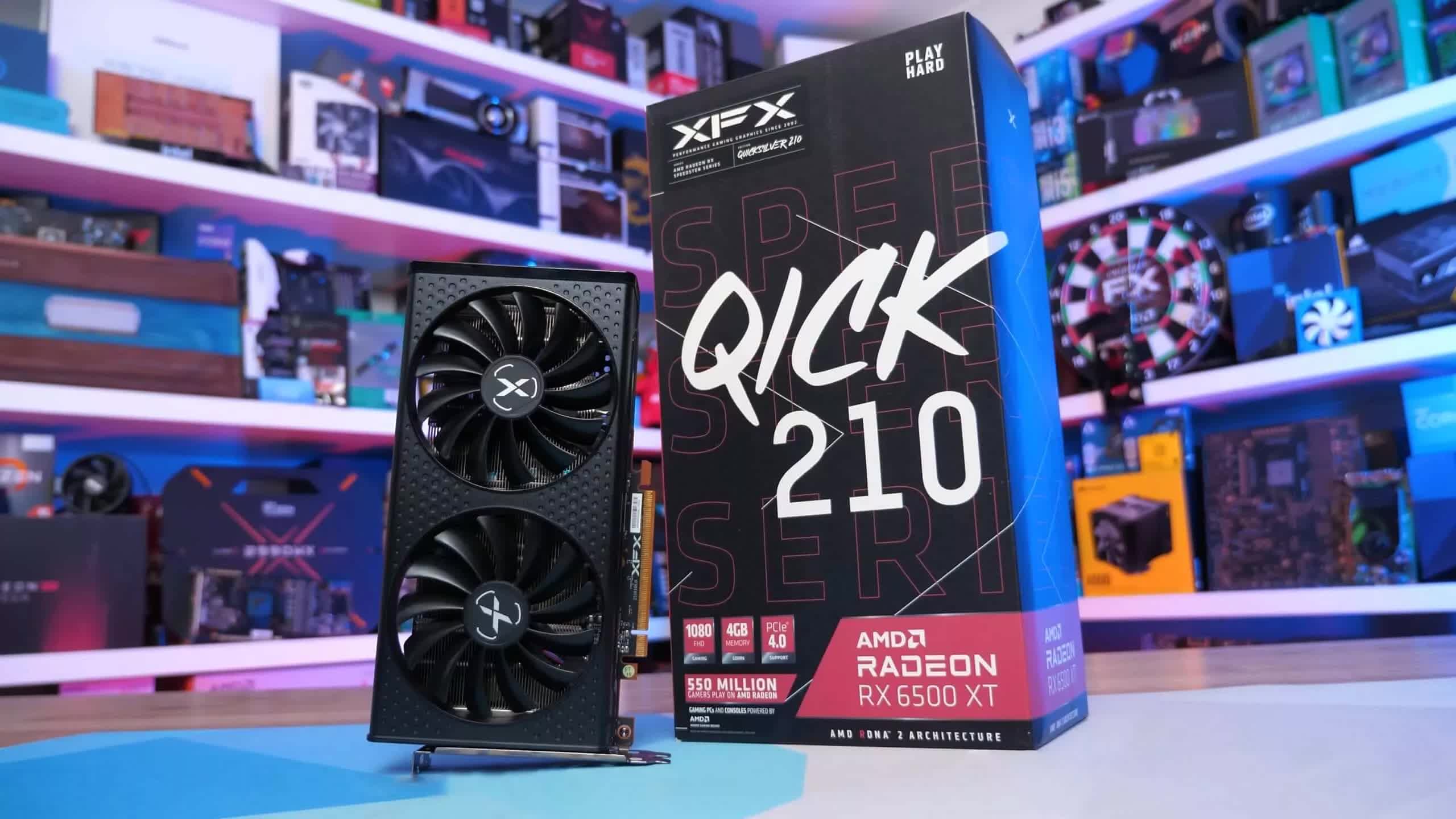
Dell has similar deals, though they’re a little pricier. For a cent under $900, you can get an Alienware Aurora R14, sporting an AMD Ryzen 5 5600X, with 16GB of DDR4-3200, and a 512GB M.2 SSD. What’s not so hot is the included Radeon RX 6500 XT — it’s one of the worst graphics cards we’ve seen in a while.
However, for $100 more, the package alters to include a Ryzen 7 5800 and a Radeon RX 6600. That CPU is excellent and the graphics card is also fine for 1080p gaming. There’s no monitor included in the offer, but at least a basic keyboard and mouse are.
With a larger $1,000 budget, pre-builds can certainly be considered. If you’re currently using an old system and you’re on the hunt for a full system upgrade, without the hassle of doing it yourself, then at least they’re an option.
Is it worth going mobile?
When the budget was $500, gaming laptops were absolutely out of the question, but we have more luck here. For $830, HP is offering a Ryzen 5 6600H laptop, sporting a GeForce RTX 3050 graphics chip (with just 4GB of RAM), 16GB of DDR5-4800, and 512GB of M.2 SSD storage. The 1080p screen’s nothing to write home about, but it’s a decent size, uses an IPS panel, and has a 144Hz refresh rate.
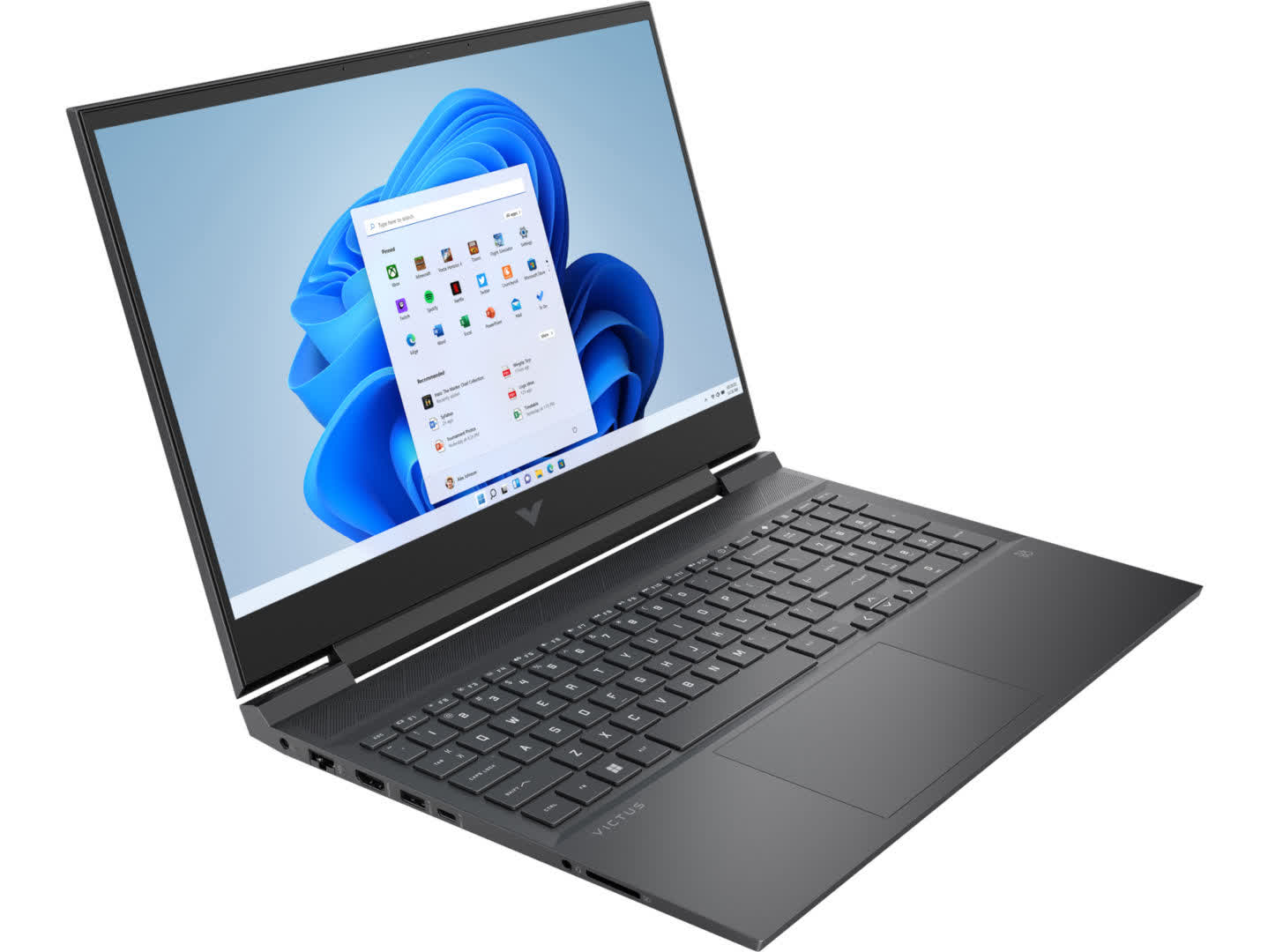
Dell’s range of sub-$1,000 gaming laptops isn’t as good as HP’s — at first glance, the range looks to have similar specs, but the screens are worse, and they come with less memory and storage.
The problem with gaming laptops in this price range is typically the combination of GPU, RAM, and SSD. At least one of these aspects will be rather underwhelming, and it’s nearly always the graphics front.
While the desktop version of the GeForce RTX 3050 is fine, the mobile versions (regular and Ti models) come with a paltry amount of RAM and significantly lower clock speeds, to keep the power consumption down.
Browsing through Amazon shows near identical offerings from Acer, Asus, Gigabyte, Lenovo, and MSI — all have good CPUs, and most come with a healthy amount of memory and storage. It’s the GPU that always lets them down, at this price range.

Don’t be fooled by the prices for some older models, such as this Asus TUF Ryzen 7 3750H, especially given that it comes with 16GB RAM, and a 6GB GPU. Both the CPU and graphics processor are over 3 years old now and the former only has 4 cores.
If platform mobility is an absolute must, either for work or school, then you may well be better off just getting a really good budget laptop and putting the rest of the money towards something like Valve’s Steam Deck or a Nintendo Switch.
DIY is still the way to go
Just as it was when the budget limit was $500, the best way to maximize your pennies is to cut out the middleman and build everything yourself. The whole process can be immensely satisfying and you’ll be able to get the look and configuration exactly how you want it. Or will you?
Component prices, especially graphics cards and motherboards, are as high as they’ve ever been and there’s no immediate sign of them coming down any time soon (if at all). That means you’ll need to make some careful decisions before clicking the purchase button.
As a rough template, this is how much money should be allocated toward each primary component of the PC — the figures shouldn’t be seen as immovable limits because saving in one area can be set aside for another.
| Component | Budget allocation |
| Processor | 15% / $150 |
| Motherboard | 10% / $100 |
| Memory | 5% / $50 |
| Graphics card | 30% / $300 |
| Storage | 12% / $120 |
| Monitor | 12% / $120 |
| Case + PSU + Input | 12% / $120 |
| Software | 4% / $40 |
Some of these figures may seem very low, but let’s address each one to see what we can get for each mini-budget, starting with the CPU…
For that price, there are really only two choices: AMD’s Ryzen 5 5600X and Intel’s Core i5-12400F. Both are excellent in their own right and provide the basis for a solid gaming PC. The 5600X is currently around $159, but the marginally slower 5600 can be picked up for $20 less.
Both vendors’ CPUs don’t have an integrated GPU, as Intel’s F-variants have theirs disabled. Not that it matters much for a gaming PC, but it’s sometimes useful to be able to boot to an alternate GPU when troubleshooting issues with a graphics card.

Despite being an Alder Lake processor, the 12400F doesn’t fully use Intel’s BIG.small architecture. It just has 6 ‘BIG’ Performance cores, but these fully support SMT (up to 12 threads simultaneously, like the 5600X does).
If power consumption (and therefore, heat emitted) is an important factor in your buying matrix, then the AMD chip is the better choice, although the difference between them is somewhat affected by the choice of motherboard.
Six core/twelve thread CPUs should be considered the minimum for any $1,000 gaming PC. Yes, it would be nicer to have additional cores or higher clocks, but spending more in this segment will limit the others quite severely. For example, the Core i5-12600 still only has six cores and while it’s 0.4GHz faster than the 12400(F), that extra clock speed will set you back a further $100.

Next up, motherboards. Here we could easily go on and on, exploring the various options from all the different vendors, but our budget is too tight in this area to explore too much.
So, we’ve narrowed it down to MSI’s B450 Gaming Plus Max for the Ryzen 5 5600X and Asrock’s B660M-HDV for the Core i5-12400F. Good budget motherboards for Intel 12th/13th gen CPUs are hard to find under $100. You might be lucky and find one on sale, but the better ones are north of $120. This isn’t the case for the AMD AM4 platform and there are lots of alternatives to consider.
Updated with the latest BIOS revision, both motherboards support more potent CPUs for their respective sockets — the Ryzen 9 5950X or Ryzen 7 5800X3D for the AM4 board, or the Core i9-13900K for the Asrock model.
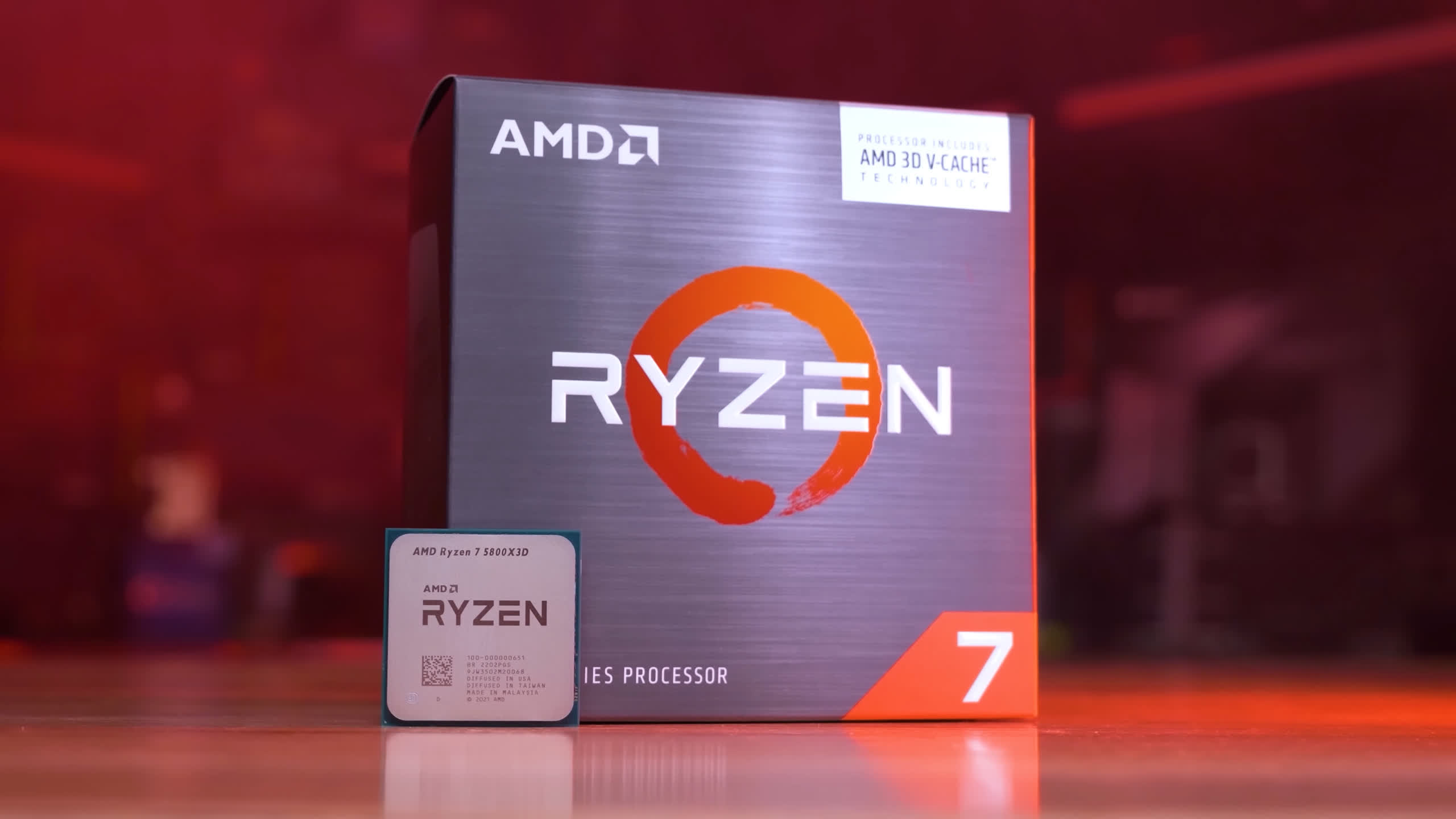
Neither board is really designed for such chips, and the power delivery systems may not be able to cope with 120W+ processors. They should work, but not to their fullest extent. But given that any one of those high-end CPUs is roughly half our budget in price, we can safely leave them out of the equation.
Processors need memory to work and as much as we’d like to spend lots of money on high-speed, low-latency RAM, we need to target a budget of $50 or so. For the Ryzen setup, a pair of 8GB G.Skill Ripjaws V DDR4-3200 is a good choice and this will work fine for the Intel configuration, too.
The i5-12400F also supports DDR5, but the Asrock motherboard only permits DDR4 to be used — given how expensive the newer RAM is at the moment, it’s not an issue yet. But if you wanted to upgrade the CPU and RAM, to something more potent, then your options will be limited.
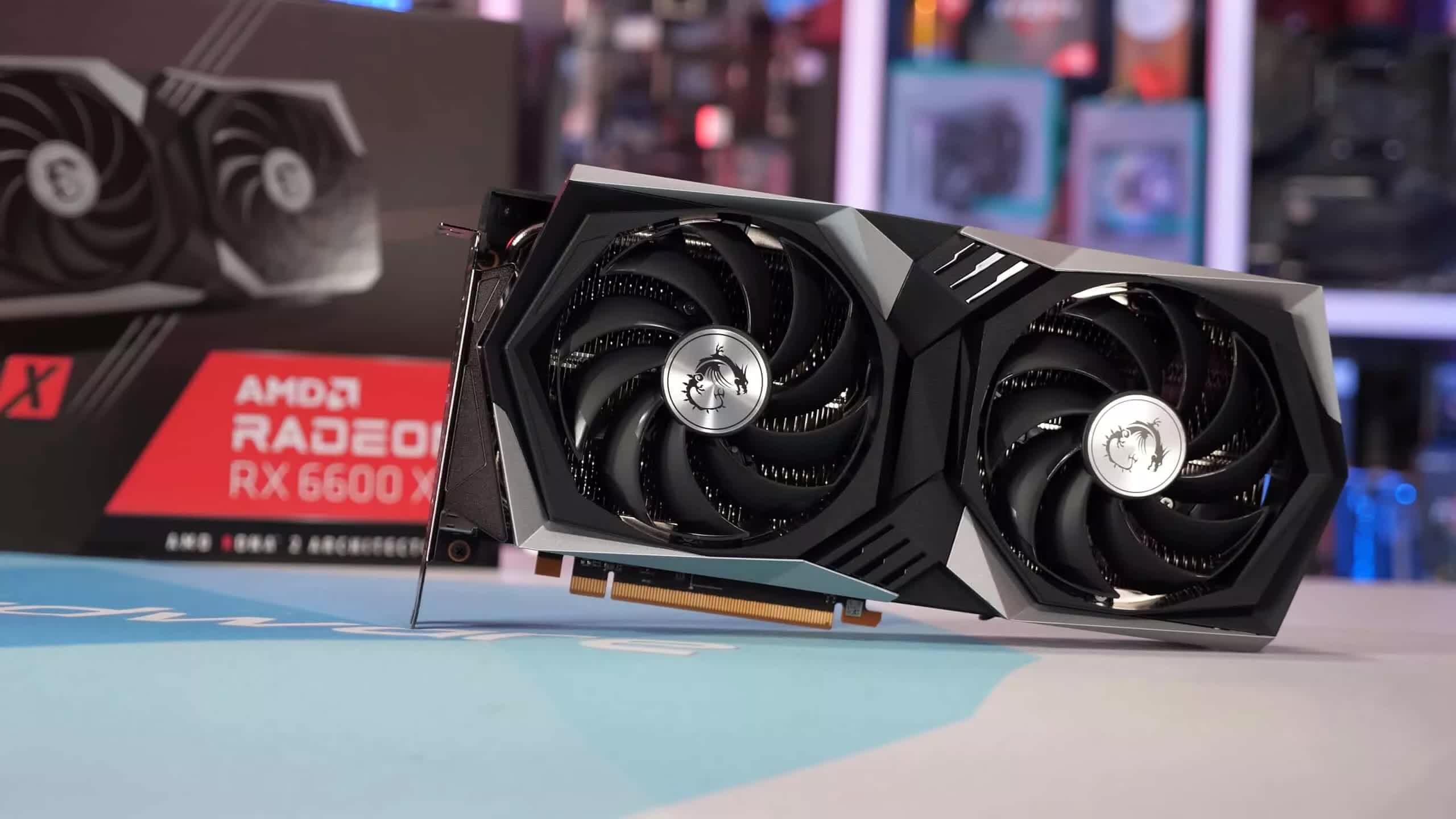
And now we come to the graphics card and with only $300 or so to spend, there’s really only one great choice: AMD’s Radeon RX 6600 or 6600 XT. With 32 compute units, 8GB of GDDR6, and a boost clock speed of 2.35GHz, this is an excellent GPU for 1080p gaming. It’s pretty good for 1440p, too, but its performance will depend on the game at that resolution.
If you absolutely need to stick with an Nvidia product, then your choice is restricted to the GeForce RTX 3050 which is slower and more expensive.

With 60% of our $1,000 budget already gone, it’s now time to consider storage, monitors, cases, and the rest. As far as the former is concerned, we’d recommend buying a small M.2 SSD for Windows and important applications, and a large HDD for games and other files.
SSD prices are somewhat variable at the moment, but the WD SN770 500GB SSD can be had for $50. Paired with their 2TB WD Blue HDD for $60, and you’ve got a decent storage solution for less than 12% of the total budget.

We’ve only got the same amount of money to spend on the case, PSU, keyboard, and mouse — so we’ll go with Thermaltake’s V100 ATX mid-tower and their 600W Smart 80+ PSU, leaving $30 to spend on NPET’s S22 gaming keyboard and mouse combo (so maybe pick better peripherals, there’s plenty to choose from).
There are just two items left to go through. Well, actually three, but we’ll come to that in a moment.
Unless you’ve got a license key for Windows already, you’ll either have to buy one or go with a Linux setup. We went through the matter of OEM Windows costs in our $500 gaming PC article, so we won’t repeat it here, as the points covered are still relevant. Suffice it to say, you can still purchase a Windows 10 key from Kinguin for under $30 or a Windows 11 one, for the same amount.
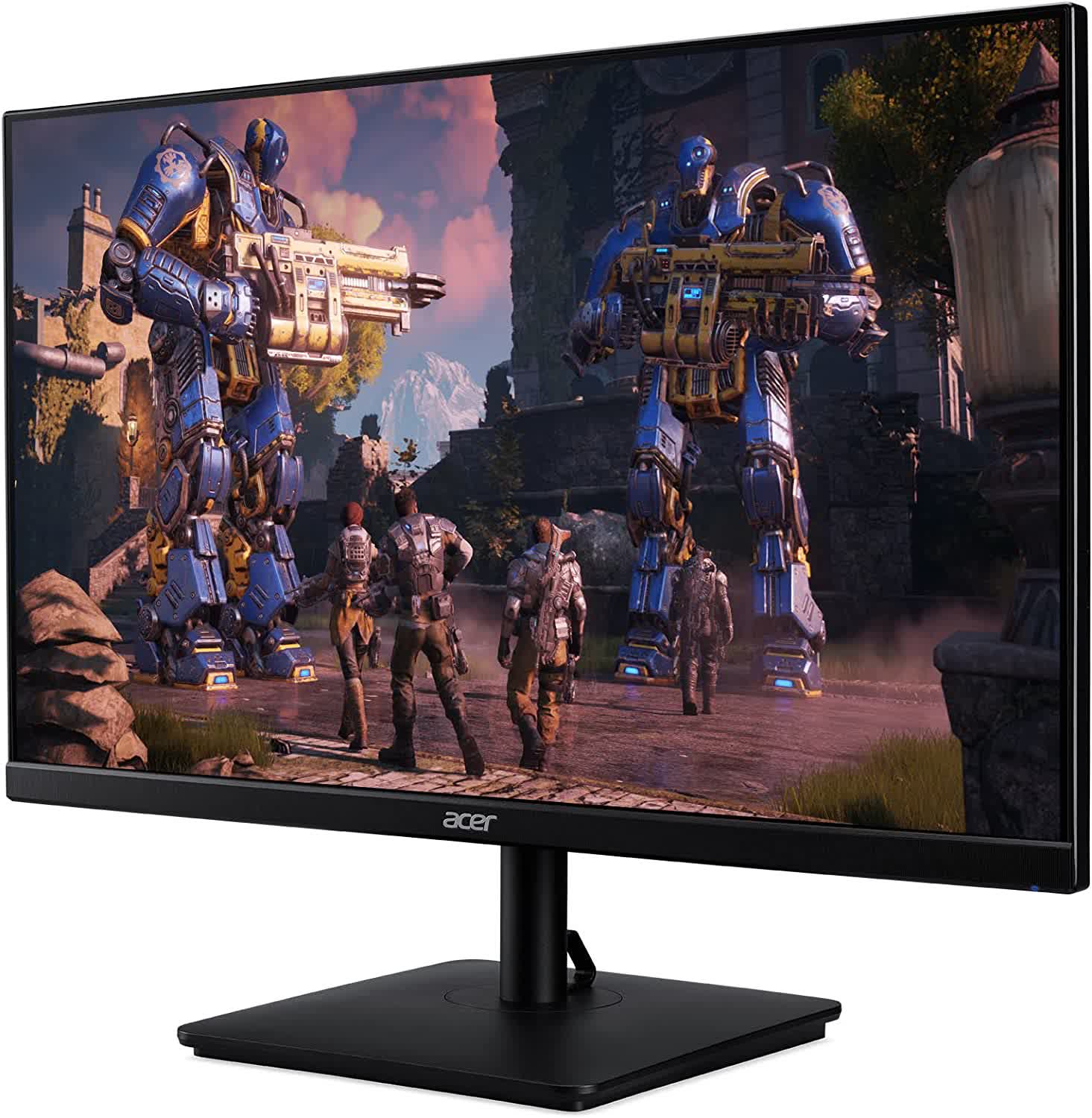
The final main item to go on our shopping list is a monitor and we’ve just $120 to throw at it. As with everything else we’ve covered, shopping around can unearth some good deals, such as Acer’s 24″ 1080p PG241Y model, with an overclocked 165Hz refresh rate and support for AMD’s FreeSync.
Their SB241Y model (same size and resolution) is cheaper, but the refresh rate is only 75Hz, so it’s not worth it for the sake of a few dollars.
Putting it all together: Option #1
| Component | Product | Price | |
| Processor | AMD Ryzen 5 5600X | $155 | |
| Motherboard | MSI B450 Gaming Plus MAX | $100 | |
| Memory | G.Skill Ripjaws V DDR4-3200 16GB (2x8GB) | $50 | |
| Graphics / Sound | MSI Radeon RX 6600 XT Mech 2X 8G OC | $280 | |
| Storage | WD 500GB SN770 / 2TB HDD | $115 | |
| Monitor | Acer PG241Y | $120 | |
| Case + PSU + Input | Thermaltake case & PSU, K&M | $122 | |
| Software | Operating system | $30 | |
|
System Total |
$972 | ||
Yes, we’ve come under budget but prices change quite frequently, as sales and products come and go. It’s always best to give yourself a 10% leeway when it comes to budgeting each part.
But the point to take from this is that it’s perfectly possible to build your own gaming PC, including all the components you need, for a maximum of $1,000.
And it’s the same story if you want to go with an Intel setup, as shown below:
| Component | Product | Price | |
| Processor | Intel Core i5-12400F | $160 | |
| Motherboard | ASRock B660M-HDV | $94 | |
| Memory | G.Skill Ripjaws V DDR4-3200 16GB (2x8GB) | $50 | |
| Graphics / Sound | MSI Radeon RX 6600 XT Mech 2X 8G OC | $280 | |
| Storage | WD 500GB SN770 / 2TB HDD | $115 | |
| Monitor | Acer PG241Y | $120 | |
| Case + PSU + Input | Thermaltake case & PSU, K&M | $122 | |
| Software | Operating System | $30 | |
|
System Total |
$971 | ||
If you don’t need to maximize FPS but value, the non-XT version of the Radeon RX 6600 is closer to $230, so if you wanted to save a little money, you could potentially opt for this and maybe even get rid of the HDD and you will get closer to a $860 build.
Success all around, it would seem, and time for tea and biscuits.
Compared to the pre-builds, we’ve got more storage, more RAM, and better graphics. Sure, the case and cooling systems may not look as nifty as what an OEM vendor may offer, but the internals are much better.
But why is this option #1? What other options are there? Well, there’s one thing that we’ve ignored from the list of components and that’s cooling. Both CPUs above ship with a heatsink and fan, but they’re not the nicest of systems.
They won’t limit the performance of the processors, but they can be noisy when working hard and they leave little scope for any overclocking.
Bye, bye monitor: Options #2 and #3
All graphics cards come with at least one HDMI output so, in theory, it’s possible to connect your new gaming PC to a TV and use that instead of a monitor. The refresh rate is unlikely to be as good and it can get rather messy with cabling, but it’s an option. Or you may well already have a monitor, if you’ve got an old PC that you’re looking to upgrade from. Today’s LCD panels are really good unless they’re very cheap, but using an older one does give us $120 to play with.
Most of that could be blown (pardon the pun) on a better CPU cooler — Noctua’s NH-D15 is among the best you can get at $100, it’s not cheap at all, but it’s quiet and exceptionally capable. If you’re wanting to go with liquid cooling (a.k.a. AIO or closed-loop coolers), then the Arctic Liquid Freezer II 240 is a great choice and at $92, it’s cheaper than the Noctua.
The rest of the cash can then be spent on some additional case fans, to improve the overall airflow, helping to keep the core temperatures of the CPU and GPU under control.
But should you do this? After all, $120 is no small amount of change and when added to the GPU budget, there’s scope for something even better.
GPU prices are still high, but without the monitor in the budget, there’s sufficient extra cash for you to consider the Radeon RX 6700 XT. This GPUs sports 40 CUs, 12GB of RAM, and a boost clock of 2.58GHz. It’s already overpowered for 1080p gaming, but a better monitor could always be purchased later on.
| Component | Product | Price | |
| Processor | Intel Core i5-12400F | $160 | |
| Motherboard | ASRock B660M-HDV | $94 | |
| Memory | G.Skill Ripjaws V DDR4-3200 16GB (2x8GB) | $50 | |
| Graphics / Sound | XFX Speedster RX 6700 XT Core | $410 | |
| Storage | WD 500GB SN770 / 2TB HDD | $115 | |
| Monitor | None | $0 | |
| Case + PSU + Input | Thermaltake case & PSU, K&M | $122 | |
| Software | Operating System | $30 | |
|
System Total |
$981 | ||
In this price bracket, you’re looking at a GeForce RTX 3060, if you want to go with an Nvidia GPU. It’s not as fast as the RX 6700 XT for rasterization but DLSS/ray tracing is better and more usable in this segment (you’d need the considerably more expensive 3060 Ti to match/better the AMD model in regular gaming).
Alternatively, the funds released by not getting a new monitor could go towards a better CPU or motherboard. With a new limit of $270, AMD’s Ryzen 7 5800X becomes affordable but it’s not that much faster in gaming than the 5600X. For Intel chips, models notably better than the i5-12400F fall a little outside of this price bracket, with the exception of the Core i5-12600KF.
It offers a sizable performance boost over the 12400 but only if paired with a powerful graphics card. With something like the RX 6600 XT or RTX 3050, the overall frame rate of most games is going to be determined by the GPU.
For the vast majority of people, AMD’s Ryzen 5 5600X and Intel’s Core i5-12400F are more than good enough for almost all gaming scenarios. Any additional funds you can put towards the PC’s budget should really be put into the graphics card.
What about second-hand parts?
At the time of writing our $500 Gaming PC article, second prices for graphics cards were ridiculously high, due to supply chain issues and the cryptocurrency boom. New GPUs were virtually impossible to find and so people (and opportunists looking to make a quick buck) turned to the second market.
Unfortunately, that’s still the case now, as affordable GPUs are in relatively few in number and Nvidia’s latest generation of graphics cards are hugely expensive. But a $300 limit on eBay shows some potential purchases.
Older models, such as Nvidia’s GeForce GTX 10 and RTX 20 series cards appear frequently, including the GeForce GTX 1080 Ti (which is still a capable GPU). There are lots of GeForce RTX 3060 Ti models floating around, too.

However, when that same kind of money can buy you a brand new (and therefore backed by a warranty) Radeon RX 6600 XT or better, depending on what’s on sale, second cards don’t seem like much of a bargain. You have no guarantee as to its condition or full knowledge as to how well it’s been treated — it’s not something we’d recommend when everything else you’re getting is new.
The same is true of motherboards, especially given the array of components across that could be damaged or faulty, but CPUs are relatively bullet-proof. However, nothing really stands out as being worth getting, instead of our recommendations.
In short, there’s no need to go second-hand with a $1,000 budget. That’s sufficient money to put together a gaming PC that will serve you well for many years. You’ll be able to play a whole host of excellent titles, on high-quality settings, to keep you entertained for long hours, and have a system that can easily handle a multitude of office, photo, and video tasks.
So yes — you can build a gaming PC for $1,000, and a really good one at that!
Shopping Shortcuts:
- AMD Ryzen 5 5600X on Amazon, Newegg
- Intel Core i5-12400F on Amazon, Newegg
- G.Skill Ripjaws V DDR4-3200 (2x8GB) on Amazon, Newegg
- MSI B450 Gaming Plus MAX on Amazon, Newegg
- ASRock B660M-HDV on Amazon, Newegg
- WD_BLACK 500GB SN770 SSD on Amazon, Newegg
- Western Digital 2TB Blue HDD on Amazon, Newegg
- Thermaltake V100 ATX case on Amazon, Newegg
- Thermaltake Smart 600W PSU on Amazon, Newegg
- NPET S22 Gaming Keyboard & Mouse on Amazon
- Acer PG241Y 23.8″ monitor on Amazon, Newegg
- Radeon RX 6600 XT on Amazon, Newegg
- GeForce RTX 3050 on Amazon, Newegg
- Radeon RX 6700 on Amazon, Newegg
- GeForce RTX 3060 on Amazon, Newegg
Masthead credit: Resul Kaya

